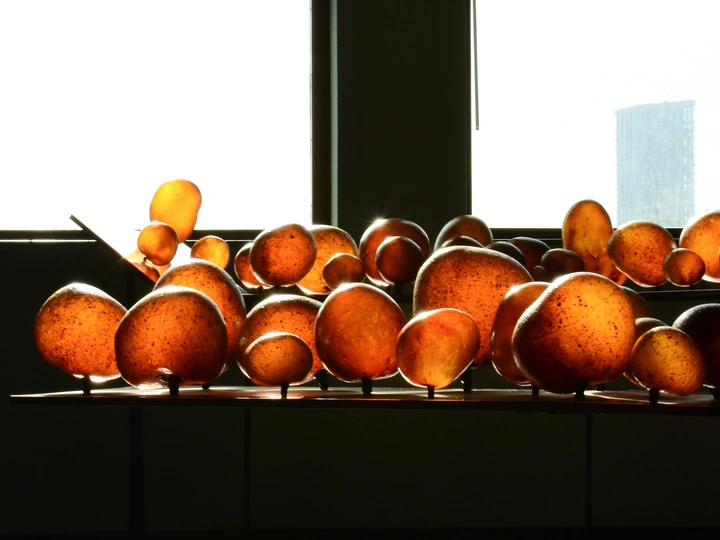Made by Insects

Rouven Jost
Davide Malnati
Ori Orisun Merhav
Hello, my name is Ori Orisun Merhav, an artistic researcher and designer with passion for materials and the stories they carry. Graduated from the Design Academy Eindhoven, where my thesis explored matter as a reflection tool of the relationship between humans and nature. Through my practice I observes ecological points of view and natural phenomenons, aiming to promote a bio-inclusive future and create a new bond with our planet. My process is collaborative, often working in multidisciplinary teams. With an experimental and ‘hands-on’ approach my work is mostly translated into interactive experiences, installations, collectible artefacts and platforms to archive and share knowledge.
In addition I give workshops and lectures on the topic of ‘Nature as a Coach’, how can we learn from the intelligence in the natural world arounds us? Perhaps developing a more eco-centric thinking.
In more recent years humanity has broken away from their ties to the natural world. Now more than ever society is driven by fast production and linear economies, neglecting one of the most valuable approaches in nature, the regenerative approach. In the natural world we see on going exchanges and circular systems where elements are continuously transformed.
When we draw lines between nature and life, we give way to creating linear systems that promote material exploitation and pollution, we see ourselves separate from the planet. Matter is one of the strongest reflection tools on our relationship with nature. The way we extract, consume, treat and give back materials to the environment, is shaping our bond with our surrounding.
To understand matter is to understand our world on an elemental level, we need to rethink how we treat matter, thriving for a bio-inclusive future. A future that is made of many new unconventional, unexplored biomaterials, that will together create an archive of new resources. Through material driven research we can expand this future archive.
The research pushes the polymer into new exciting realms, beyond its conventional use as a coating material. Since the rise of chemical coatings, the demand for the natural version is decreasing and the material is getting forgotten. Therefore, I felt the necessity to revive this beautiful material, by suggesting new innovative techniques to work with it. Envisioning a new future for this polymer.
I traveled to Thailand to meet these insects, study the unique nature phenomenon of insects naturally produce a polymer. Over the course of a month I immersed myself in the fields, engaging in insightful interviews with various individuals. Through this firsthand experience, I dived into the essence of the material and the different stages of the process, all the while closely observing these fascinating insects in their biotic sphere.
The insects grow on tree branches, their life cycle is about ten months. As they are fed on the ‘phloem’ tissue of the tree, their body is secreting the polymer. Which they use to form their cocoons. Towards the end of their life cycle they lay eggs inside, and only when those are breaking out, then the farmers will harvest the material. It is the leftover of their life cycle.
Back in Europe I started conducting experiments in the material, setting up a ‘Lac Lab’. As the insect use the material to form their cocoons in a quite architectural way, I was inspired to try and form other structure with it. Traditionally the material is being dissolved in alcohol and brushed on surfaces. However, this research showcases an innovative approach. Demonstrating that this natural polymer can be skilfully crafted into three dimensional shapes, opening up exciting possibilities for its application. Insects Matter aspire to contribute to a new chapter in the appreciation and utilisation of this remarkable material, not only redefining its significance in the world of design and industry. But also encourage a broader research for a bio-inclusive future